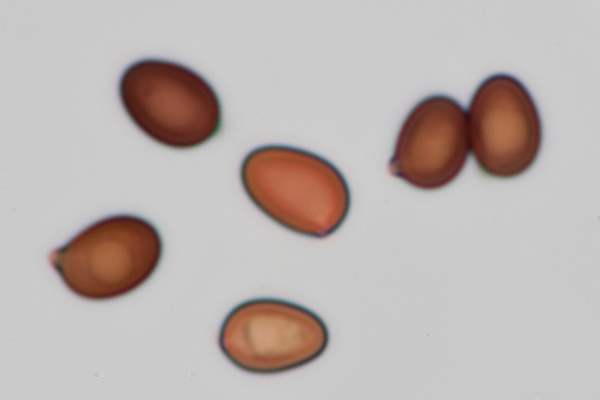Agaricus augustus Fr. - The Prince
Phylum: Basidiomycota - Class: Agaricomycetes - Order: Agaricales - Family: Agaricaceae
Distribution - Taxonomic History - Etymology - Edibility - Identification - Culinary Notes - Reference Sources
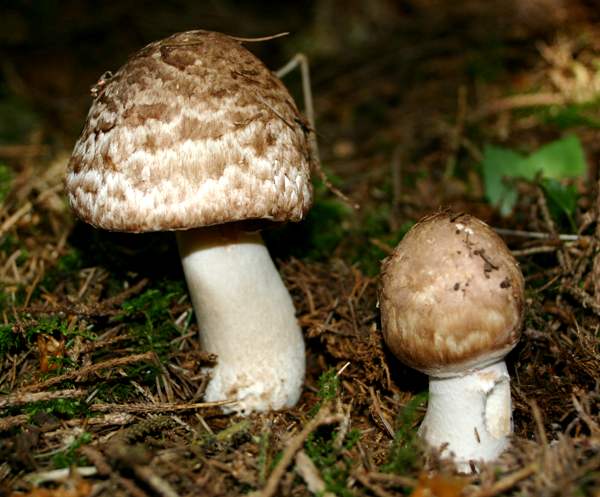
Unfortunately far from common in most parts of Britain and Ireland, Agaricus augustus is one of the very finest of edible fungi (indeed, truly deserving of the title Prince of Mushrooms!); it usually appears in small groups in open woodland or beneath parkland trees, particularly conifers.
The Prince is exceptional among woodland mushrooms in being instantly recognisable from a distance; however, if you are ever in any doubt its bitter-almond odour provides additional assurance.
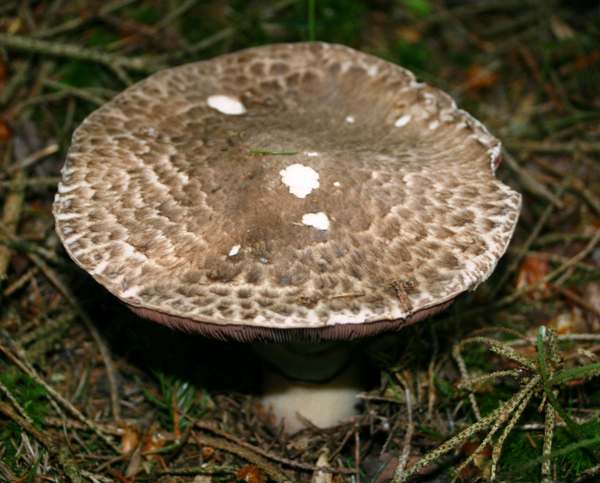
Distribution
A widespread but occasional find, in Britain and Ireland The Prince often fruits in small groups.
Agaricus augustus occurs throughout mainland Europe and in Asia, northern Africa and many parts of North America; it has been introduced into Australia.
Taxonomic history
Agaricus augustus was first named and described in 1838 by the Swedish botanist/mycologist Elias Magnus Fries, and the name has remained unchanged to this day.
Etymology
The specific epithet augustus is thought by some to be a reference to the month of August, when this mushroom is likely to be found.
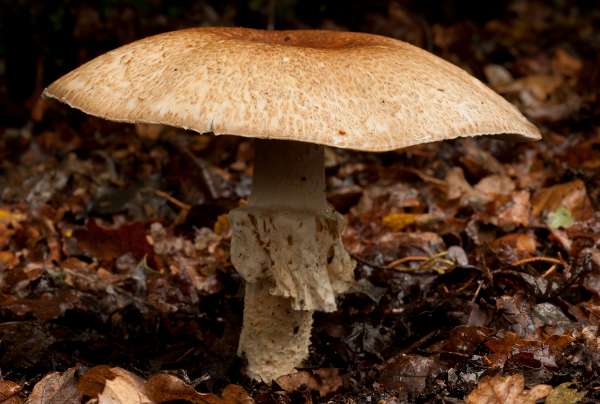
I have indeed found Agaricus augustus in Sweden during August; however, it first appears rather earlier here in West Wales where I now live - often in July. A literal translation of the Latin augustus is 'noble', and I rather favour that interpretation... the Noble Prince seems most apt!
The mature Prince mushroom shown above was photographed in southern England by David Kelly, with whose kind permission this picture is shown here.
Edibility
I have found no reports of people becoming ill as a result of eating this species in the UK, although in the USA it has been known to cause a few people what David Aurora (author of Mushrooms Demistified) refers to as 'mild distress', while a correspondent from Oregon USA has since told me that he suffered a terrible reaction to this particular mushroom and does not recommend eating it. The usual precautions are advisable when trying this or any other mushroom for the first time: start with a small portion to make sure that your body is not intolerant of this partcular species.
When fully expanded, caps of Agaricus augustus can attain a diameter of 25cm and occasionally more, but as these prized edible mushrooms are prone to maggot attack it is usually best to gather any you intend eating when their caps are young and still expanding. The flesh has a firmer and more pleasant texture when the caps are only partly expanded.
Provided that you check all of its identification features, Agaricus augustus is one of the easiest of the gilled edible fungi to identify with confidence; it is also a big mushroom, and so one substantial specimen is quite sufficient to make a meal fit for a prince. What a pity that these superb mushrooms don't occur in more places and in greater abundance! Use The Prince in any menu calling for button mushrooms and you are certain to notice a big difference in flavour. You will also find when you are cooking them that the 'almond' scent of Agaricus augustus is quite different from the usual mushroomy small of supermarket-bought Portobello Mushrooms, Chestnot Mushrooms, etc, all of which are cultivated forms of Agaricus bisporus.
Identification guide
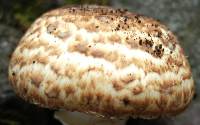 |
CapThe Prince has caps 10 to 25cm across (exceptionally 30cm) at maturity; initially hemispherical, becoming broadly convex and sometimes flattening completely; the cream surface is covered in large reddish-brown scales, increasingly dense towards the centre. |
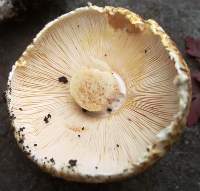 |
GillsFree; pale pink, turning very dark purple-brown with age. |
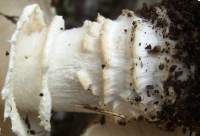 |
StemStems of Agaricus augustus are 10 to 20cm long and 2 to 4cm diameter and have a large pendulous white ring; the white surface of the stem is smooth above the ring and has small woolly scales below. |
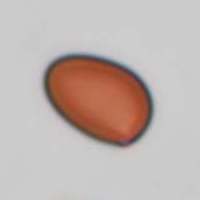 |
SporesEllipsoidal, smooth, 7-10 x 4.5-6.5μm. Spore printPurple-brown. |
Odour/taste |
Fresh young fruitbodies smell strongly of bitter almonds. |
Habitat & Ecological role |
Saprobic, in open woodland or on woodland edges and occasionally beneath trees in parks and gardens, particularly with conifers. |
Season |
July to November in Britain and Ireland. |
Similar species |
Agaricus bernardii is slightly smaller; it occurs in coastal dune slacks. |
Culinary Notes
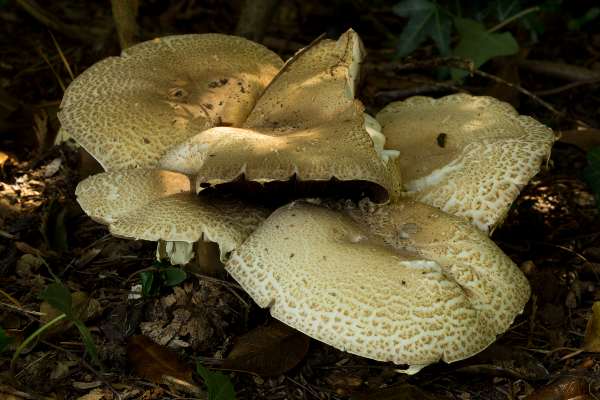
The Prince is a highly-prized edible species and can be used in any recipe calling for large cultivated (Portobello) mushrooms. It is great in rissotto dishes and omelettes, and it certainly has more than enough flavour to make tasty soups or sauces to be served with meat dishes.
Reference Sources
Fascinated by Fungi, 2nd Edition, Pat O'Reilly 2016, reprinted by Coch-y-bonddu Books in 2022.
British Mycological Society, English Names for Fungi
The genus Agaricus in Britain, 3rd Edition, self-published, Geoffrey Kibby 2011.
Funga Nordica: 2nd edition 2012. Edited by Knudsen, H. & Vesterholt, J. ISBN 9788798396130
Dictionary of the Fungi; Paul M. Kirk, Paul F. Cannon, David W. Minter and J. A. Stalpers; CABI, 2008
Taxonomic history and synonym information on these pages is drawn from many sources but in particular from the British Mycological Society's GB Checklist of Fungi.
Acknowledgements
This page includes pictures kindly contributed by David Kelly and Tom Pearman.
Fascinated by Fungi. Back by popular demand, Pat O'Reilly's best-selling 450-page hardback book is available now. The latest second edition was republished with a sparkling new cover design in September 2022 by Coch-y-Bonddu Books. Full details and copies are available from the publisher's online bookshop...
